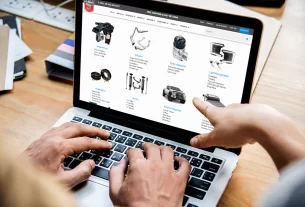
The Rise of Micro-Mobility and Compact Urban EVs: Rethinking How We Move
City streets are changing. Honestly, have you noticed? The constant hum of traffic is now punctuated by the gentle whir of an electric scooter, the quiet glide of an e-bike, and the surprisingly compact silhouette of a tiny car zipping into a parking spot you’d swear was too small. This isn’t a glimpse into a distant future; it’s the reality of urban mobility happening right now. We’re witnessing a quiet revolution on our curbs, driven by a simple, powerful idea: that the right vehicle for the job isn’t always the biggest one.
Why Big is No Longer Better in the Concrete Jungle
Let’s be real. The traditional car, for all its freedom, is a bit of a dinosaur in the urban environment. It’s over-engineered for most daily trips. Think about your average day: commuting to work, grabbing groceries, dropping kids at school. These are short hops. Yet, we’re piloting two-ton metal boxes designed for cross-country road trips, all while burning through expensive fuel and hunting for a parking space the size of a small studio apartment.
The rise of micro-mobility and compact urban EVs is a direct response to this absurdity. It’s a shift towards practicality, efficiency, and, frankly, sanity. Here’s the deal:
- Congestion & Parking Pain: Cities are choked. Smaller vehicles mean less traffic and a much easier time finding a place to park. It’s that simple.
- The Environmental Imperative: With climate concerns mounting, the demand for zero-emission transport has exploded. These small EVs offer a green alternative without the premium price tag of a larger electric SUV.
- Economic Sense: Between soaring gas prices, insurance, and maintenance, car ownership is expensive. Micro-options offer a dramatically lower cost per mile.
The Micro-Mobility Explosion: More Than Just Scooters
When people hear “micro-mobility,” they often think of those shared e-scooters littering sidewalks. And sure, that’s a part of it. But the category is so much broader and more sophisticated. We’re talking about a whole ecosystem of personal transport devices designed for the “last mile” or even the “last five miles.”
E-Bikes: The Power-Assisted Game Changer
E-bikes have completely transformed urban cycling. They flatten hills, make headwinds irrelevant, and allow people to arrive at work without breaking a sweat. They’ve become a legitimate car replacement for a huge segment of the population, offering cargo space for groceries and even kids. The best electric bikes for city commuting blend power, range, and practical features like integrated lights and racks.
E-Scooters and Beyond
Stand-up e-scooters are the nimble sprinters of the micro-mobility world. Perfect for very short trips and combining with public transit. But then you have even more innovative entrants: electric skateboards, one-wheeled boards, and even electric unicycles. These devices are becoming more powerful, safer, and are building a dedicated community of enthusiasts who see them as more than just gadgets—they’re a primary mode of transport.
The New Wave of Compact Urban Electric Vehicles
Now, let’s talk about the next level up: tiny cars. These aren’t the underpowered, unsafe golf carts of the past. Modern compact urban EVs are engineering marvels—designed from the ground up for city life.
Take the Wuling Hongguang Mini EV in China, for instance. It’s a smash hit because it solves a real problem cheaply. Or the Citroën Ami, a bizarre, brilliant, and ultra-compact vehicle that in some European countries can be driven by 14-year-olds (with a permit). It redefines what a car can be.
These vehicles prioritize exactly what city dwellers need:
- Tiny Footprints: They can park perpendicular to the curb, fitting into spaces others can’t even see.
- Affordable EV Technology: By using smaller batteries, they keep costs down while still offering more than enough range for daily errands.
- Efficiency First: They sip electricity, making them incredibly cheap to operate.
How This Shift is Reshaping Our Cities
This isn’t just about new gadgets; it’s about a fundamental reshaping of urban infrastructure. City planners are playing catch-up, and honestly, it’s a fascinating—if sometimes messy—process.
The demand for micro-mobility infrastructure is skyrocketing. This means more protected bike lanes, dedicated scooter parking corrals, and even new types of charging solutions. Some cities are experimenting with converting car parking spaces into multi-vehicle micro-mobility hubs. It’s a recognition that a space that holds one car could hold ten e-bikes or twenty scooters.
This transition also forces us to ask bigger questions about equity and access. Shared mobility schemes are great, but they often serve tourist-heavy downtown cores. The real challenge is ensuring these options are available and affordable in the suburbs and lower-income neighborhoods, truly connecting the entire city.
The Road Ahead: Challenges and Opportunities
Well, it’s not all smooth sailing. The rise of smaller vehicles brings new headaches. Sidewalk clutter from dockless scooters, safety concerns as different speed vehicles share bike lanes, and regulatory gray areas are all very real issues.
But the opportunities are massive. Imagine cities with significantly cleaner air and less noise pollution. Imagine streets where the constant search for parking doesn’t dictate your mood. Think about the potential for more green space as the demand for vast asphalt parking lots diminishes.
The future of urban transport isn’t a one-size-fits-all solution. It’s a mosaic. A tapestry of options. It’s about choosing the perfect tool for your specific journey: a compact EV for the weekly shop, an e-bike for the daily commute, and a scooter for that quick trip to the local café.
We’re moving away from a monoculture of the private car and towards a diversified, smarter, and more human-scale system. The goal is no longer just to move—it’s to move better.







